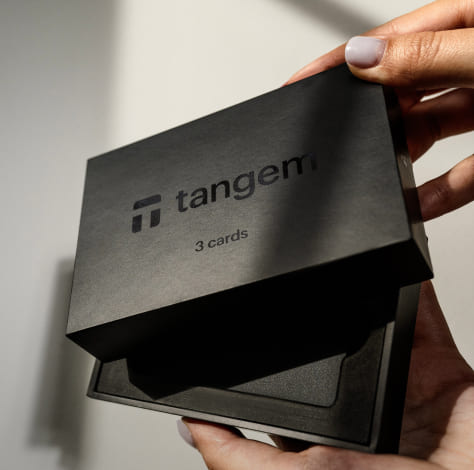There’s a growing need for effective physical security when it comes to storing cryptocurrency via hardware wallets. Choosing between home storage and a bank safety deposit box presents unique advantages and risks. Home storage offers maximum control and convenience but poses higher risks of theft or loss. In contrast, a safety deposit box adds a layer of professional security and protection against environmental hazards, though access is less immediate. Understanding these options is important to securing your valuable assets effectively.
Understanding Hardware Wallets
What is a Hardware Wallet?
For cryptocurrency holders, a hardware wallet is a physical device designed to securely store private keys offline. These wallets provide a safe interface to manage digital assets, minimizing the risk of exposure to online threats such as malware or hacking. Unlike software wallets, which are connected to the internet, hardware wallets are immune to remote attacks, making them a favored choice for long-term asset storage.
Understanding their functionality, hardware wallets often offer features like encrypted storage, two-factor authentication, and secure recovery options. Users can interact with their funds without compromising their private keys, ensuring that transactions remain confidential and protected. This combination of usability and security is what sets hardware wallets apart in the cryptocurrency landscape.
Importance of Physical Security
What constitutes physical security for hardware wallets is the safeguarding of the device itself against theft, loss, or damage. Hardware wallets, while inherently secure, can be vulnerable if not stored properly. This highlights the necessity for a solid plan regarding where and how these devices are kept, whether at home or in a bank safety deposit box.
And the implications of inadequate physical security can be severe. Just as with traditional assets, ensuring the protection of your hardware wallet from theft or physical damage is necessary. A stolen or damaged wallet could lead to irreversible loss of funds, underscoring that the choice of storage location is a vital decision factor for anyone managing significant crypto investments.
Home Storage of Hardware Wallets
Even though storing hardware wallets at home offers a level of convenience, it presents unique risks that must be managed. Many users appreciate the immediate access to their cryptocurrencies without relying on third parties. Home storage allows for personal control and flexibility, enabling users to engage with their assets at any time without restrictions imposed by banks or storage services.
Pros of Home Storage
For many cryptocurrency holders, home storage represents a significant advantage in control and accessibility. Users can monitor their hardware wallets and transactions directly, ensuring they maintain personal oversight. This immediacy can be comforting for those who prefer handling their assets without external influences.
Cons of Home Storage
By opting for home storage, users expose themselves to various security threats. Vulnerabilities such as theft, fire, or loss can compromise access to the wallet and its contents. A home environment can be unpredictable, resulting in potential breaches that may not occur in a more secure facility.
Home storage can also lead to challenges in maintaining security protocols consistently. Failures in personal security practices, such as inadequate backup measures or poor encryption, can make hardware wallets susceptible to unauthorized access or irreversible loss. Without the layered protections often found within bank safety deposit boxes, individuals may inadvertently jeopardize their assets.
Bank Safety Deposit Boxes
While many individuals consider home storage for their hardware wallets, using a bank safety deposit box offers a level of security that can significantly mitigate risks. Banks provide a highly secure environment, designed to protect valuable items and sensitive information against theft, fire, and water damage. This protection is complemented by insurance options, ensuring peace of mind for individuals storing their hardware wallets.
Advantages of Using a Safety Deposit Box
Between the robust security measures that banks implement and the peace of mind knowing that your assets are monitored and protected, safety deposit boxes present a compelling option for hardware wallet storage. Banks typically utilize advanced security systems, including 24/7 surveillance and alarm systems, to safeguard these boxes. Additionally, access is restricted to authorized individuals, making unauthorized access highly unlikely.
Disadvantages of Using a Safety Deposit Box
Deposit boxes, while secure, pose some limitations that should not be overlooked. Access to your hardware wallet can be challenging if bank working hours do not align with your schedule, creating potential delays in retrieving your assets when needed. Furthermore, loss of access due to events such as a bank merger or closures could complicate the recovery process of your hardware wallet, leading to potential risks.
To enhance your understanding of the disadvantages, it’s important to consider that accessing funds or assets quickly during a financial emergency may be hindered by bank policies. The lack of immediate access can lead to frustration, especially if rapid transactions are necessary. Additionally, if you forget your access details or face unexpected bank holidays, it could delay your ability to access your hardware wallet when you need it the most.
Comparing Security Measures
Unlike traditional storage methods, the security measures employed for hardware wallets can vary significantly between home storage and bank safety deposit boxes. Understanding these differences is vital for determining the best option for your needs.
| Home Storage | Bank Safety Deposit Box |
|---|---|
| Personal control over hardware wallet. | Secured by the bank’s advanced security systems. |
| Vulnerability to home theft and environmental hazards. | Less risk of theft; potential for loss through bank crises. |
| Requires strong personal security practices. | Access limited to bank’s operating hours. |
Risks Involved in Home Storage
Comparing home storage to bank security reveals significant risks associated with keeping a hardware wallet at home. The primary threat comes from theft, as hardware wallets can be appealing targets for criminals. Furthermore, environmental hazards such as fire or flooding can lead to irreversible loss.
Moreover, without proper security protocols, there is an increased risk of accidental damage or loss. Individuals might also fall victim to social engineering attacks, where someone may manipulate them into revealing sensitive recovery phrases.
Risks Involved in Bank Storage
On the other hand, bank safety deposit boxes come with their own set of risks. The primary concern is that while banks usually have robust security systems in place, they are not immune to disruptions, such as financial crises or natural disasters, which could jeopardize access to your assets.
Additionally, access to a safety deposit box is limited to bank hours. This can be problematic in urgent situations where immediate access to the hardware wallet is necessary.
Also, it is important to acknowledge that privacy issues may arise, as banks could be compelled to disclose information during legal investigations, potentially putting your assets at risk. Furthermore, if access keys are lost, retrieving what is contained in the box can become a complex and lengthy process.
Best Practices for Securing Hardware Wallets
All hardware wallets require a solid security strategy to protect digital assets. When storing these devices at home, it’s crucial to create a secure environment. Utilize a fireproof and waterproof safe to store your hardware wallet, and consider using a safe that is also heavy and secured against theft. Along with this, disabling any nearby network connections can reduce the risk of unauthorized access, ensuring that your wallet remains insulated from potential hackers.
Minimizing Risks at Home
With home storage, it’s also wise to maintain a low profile regarding your cryptocurrency assets. Avoid discussing your holdings or the existence of your hardware wallet with anyone outside of trusted individuals. Additionally, regularly update your device firmware and utilize strong, unique passwords to enhance security further. Implementing a two-factor authentication system can make unauthorized access significantly more difficult for intruders.
Choosing the Right Bank
Above all, securing a hardware wallet in a bank safety deposit box provides peace of mind. Not all banks offer the same level of security, so evaluate institutions based on their access control measures and security protocols. Look for banks that use modern surveillance technologies and have a robust history of safeguarding clients’ assets. The right bank will also have staff trained in handling sensitive information, reducing the risk of human error.
Further, examining the insurance options provided by the bank is important, as it can protect against loss or theft. Seek out banks that offer tailored services for cryptocurrency, as they may have specialized security measures and understand the specific challenges associated with digital asset storage. Ensuring the bank has a reputable track record and adheres to stringent regulatory guidelines will enhance the safety of your hardware wallet while stored offsite.
Cost Considerations
Despite the increasing popularity of hardware wallets, the decision between home storage and bank safety deposit boxes often hinges on various cost factors. Understanding these expenses can help individuals make informed choices based on their budget and security needs. While home storage may seem economical, hidden costs can arise, including purchasing additional security measures like safes and alarm systems.
Expenses of Home Storage
Any effective home storage solution may require significant initial investment. Quality safes designed to withstand fire and theft can range from a few hundred to several thousand dollars. Additionally, the ongoing costs of utilities for security systems, along with potential insurance adjustments for increased risk, can accumulate and impact the overall affordability of home-based storage.
Fees for Safety Deposit Boxes
Among the options for secure storage, safety deposit boxes typically entail annual fees that vary depending on the bank and location. These fees can range from $50 to several hundred dollars, making it a consideration for long-term planning. Factors such as box size, bank reputation, and additional access fees can further influence the total expense.
Fees for safety deposit boxes usually reflect the level of security provided by the institution, which may offer enhanced protection compared to home storage methods. Insurance coverage for contents stored in a bank facility also provides peace of mind that home solutions might not guarantee. Ultimately, evaluating these fees against potential risks can inform a more comprehensive decision on how best to protect hardware wallets.
Conclusion
Drawing together the considerations of physical security for hardware wallets, it becomes evident that both home storage and bank safety deposit boxes offer distinct advantages and risks. Home storage provides immediate accessibility and personal control over assets, but it also exposes users to potential theft, environmental hazards, and accidental loss. On the other hand, safety deposit boxes offer a higher level of protection against physical theft and damage but can introduce inconveniences such as access limitations and fees.
Ultimately, the decision between home storage and bank safety deposit boxes should be based on individual risk tolerance, convenience, and the value of the assets being safeguarded. A balanced approach may involve utilizing both methods to leverage the benefits of each, ensuring a more comprehensive security strategy for cryptocurrency holdings.







